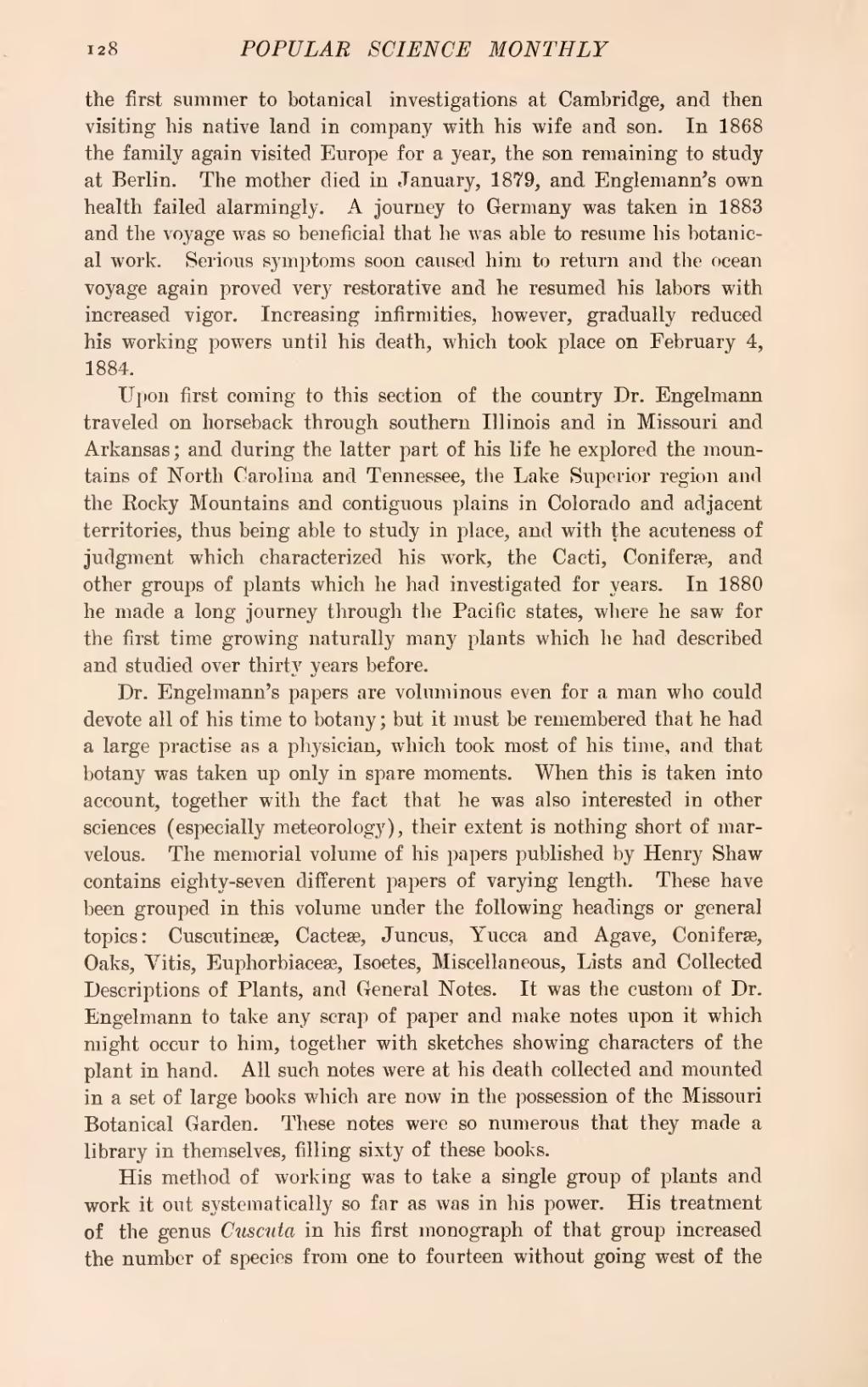the first summer to botanical investigations at Cambridge, and then visiting his native land in company with his wife and son. In 1868 the family again visited Europe for a year, the son remaining to study at Berlin. The mother died in January, 1879, and Englemann's own health failed alarmingly. A journey to Germany was taken in 1883 and the voyage was so beneficial that he was able to resume his botanical work. Serious symptoms soon caused him to return and the ocean voyage again proved very restorative and he resumed his labors with increased vigor. Increasing infirmities, however, gradually reduced his working powers until his death, which took place on February 4, 1884.
Upon first coming to this section of the country Dr. Engelmann traveled on horseback through southern Illinois and in Missouri and Arkansas; and during the latter part of his life he explored the mountains of North Carolina and Tennessee, the Lake Superior region and the Rocky Mountains and contiguous plains in Colorado and adjacent territories, thus being able to study in place, and with the acuteness of judgment which characterized his work, the Cacti, Conifers, and other groups of plants which he had investigated for years. In 1880 he made a long journey through the Pacific states, where he saw for the first time growing naturally many plants which he had described and studied over thirty years before.
Dr. Engelmann's papers are voluminous even for a man who could devote all of his time to botany; but it must be remembered that he had a large practise as a physician, which took most of his time, and that botany was taken up only in spare moments. When this is taken into account, together with the fact that he was also interested in other sciences (especially meteorology), their extent is nothing short of marvelous. The memorial volume of his papers published by Henry Shaw contains eighty-seven different papers of varying length. These have been grouped in this volume under the following headings or general topics: Cuscutineæ, Cacteæ, Juneus, Yucca and Agave, Coniferæ, Oaks, Vitis, Euphorbiaceæ, Isoetes, Miscellaneous, Lists and Collected Descriptions of Plants, and General Notes. It was the custom of Dr. Engelmann to take any scrap of paper and make notes upon it which might occur to him, together with sketches showing characters of the plant in hand. All such notes were at his death collected and mounted in a set of large books which are now in the possession of the Missouri Botanical Garden. These notes were so numerous that they made a library in themselves, filling sixty of these books.
His method of working was to take a single group of plants and work it out systematically so far as was in his power. His treatment of the genus Cuscuta in his first monograph of that group increased the number of species from one to fourteen without going west of the
